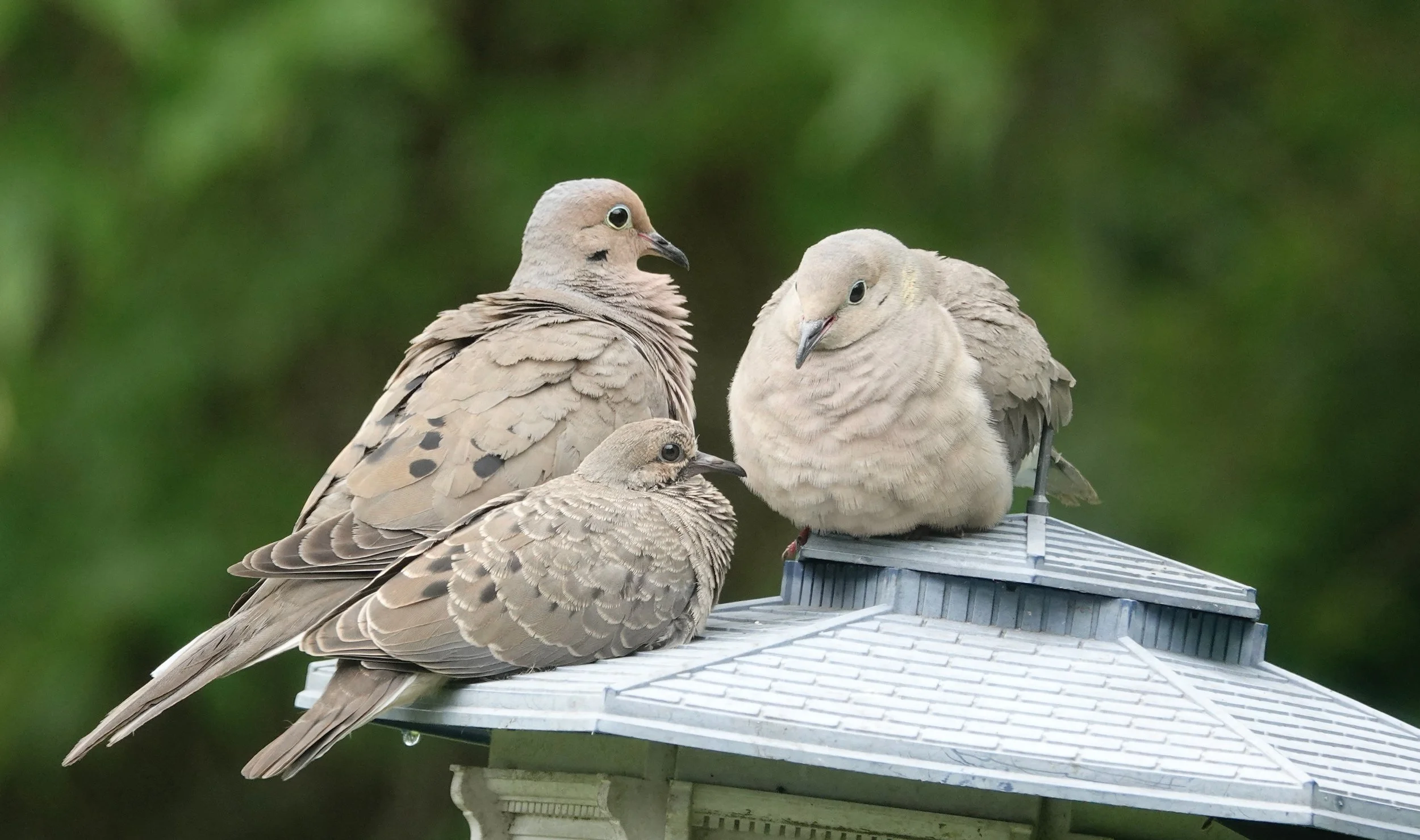Naturally
A glance out the windows showcasing feeders unveiled a red-headed woodpecker, indigo bunting, northern cardinal, Baltimore oriole, gray catbird, blue jay and black-capped chickadee. I don’t question why I watch birds, but if I did, I’d find answers in the beauty beyond the glass.
A great crested flycatcher continues to battle his reflection in several of those windows. Inchworms (cankerworms) are so abundant this year, I rarely see a house wren bill without a green worm in it. A check of the bluebird boxes was good news. If a bluebird you see, a good time having you be.
Woodpeckers are considered keystone species because of their broad effects on other species. They create cavities that other species use, aid in controlling forest insects, and may help disperse spores of fungi that are agents of decay. A keystone species is one that has a disproportionately large effect on the communities in which it lives. The term was coined by American zoologist Robert T. Paine in 1969 and refers to the practice of using a wedge-shaped stone to support the top of an arch in a bridge or other construction.
I enjoy seeing the Jack-in-the-pulpits in the woods. The plant has both male and female parts, and can change gender from year to year in response to successful (or failed) reproduction the previous year. Small flies pollinate it. The Jack-in-the-pulpit is native to the lower 48 states and parts of Canada. Some birds and mammals eat the berries of this plant, but humans should not. Native Americans harvested the roots for food, but the plant contains calcium oxalate crystals that cause blisters and painful irritations when eaten raw.
Q&A
“What are ditch lilies?” The bright orange flowers on tall spikes are perennials whose botanical name is Hemerocallis fulva, but are better known as ditch lilies, tiger lilies, orange daylilies, railroad lilies, corn lilies, outhouse lilies, tawny lilies and wash-house lilies.
“How did the loon become our state bird?” Minnesota has the largest population of common loons in the contiguous 48 states. In 1949, Minnesota's legislature appointed a state bird commission to select from eight candidates: the pileated woodpecker, wood duck, belted kingfisher, killdeer, scarlet tanager, rose-breasted grosbeak, mourning dove and common loon. The commission included ornithologists, museum directors and state officials. Their first task was to set up criteria for the selection. They were: 1. It should be a bird no other state had as a state bird. 2. It should be reasonably well known. 3. It should occur throughout the state, at least during the nesting season and preferably during the entire year. 4. It should be a strikingly marked bird whose pattern would lend itself well to use in an insignia. 5. It should have a special significance for Minnesota. Voting for the best of the eight choices included school children, sportsmen's clubs, other organizations and interested citizens. The voting was inconclusive and the legislature took no action. The American goldfinch was considered the unofficial state bird and the pileated woodpecker and the belted kingfisher were proposed for the honor. The Minnesota Ornithologists' Union continued to campaign for the common loon. They influenced public opinion and the legislature enough that in 1961, the common loon became the official state bird.
“How can I tell male and female chickadees apart?” They look identical. It’s primarily males that whistle the fee-bee song, and in aggressive encounters, males are usually dominant over females.
“When were honey bees brought to this country?” I’d learned that the honey bee didn’t exist on this continent until 1622, when colonists brought it from Europe and the Native Americans dubbed it "the white man's fly." Now I’ve read that honey bees existed at least 14 million years ago in North America, according to a fossil record identified by paleontologist-entomologist Michael Engle of the University of Kansas. It had been unearthed in the Stewart Valley basin in Nevada.
“Do any fruit trees do well in wet areas?” Fruit trees don’t like wet feet. They don’t do well where water collects. Pears can grow in wet soil conditions if they get enough sun.
“Is it only the female ticks that bite?” Both male and female ticks feed on blood by inserting their barbed, straw-like mouthparts into the skin of their host, but only female ticks drink enough to become engorged.
Thanks for stopping by
“We don’t need too much birdlore, do we, To tell a flamingo from a towhee; Yet I cannot, and never will, Unless the silly birds stand still.” – Ogden Nash
“You can rush to consult your nature guide And inspect the gallery inside, But a bird in the open never looks Like its picture in the birdie books—Or if it once did, it has changed its plumage, And plunges you back into ignorant gloomage.”—Ogden Nash.
Do good.
©️Al Batt 2024
The melancholy hul-a, hoop, hoop, hoop is the wistful song that gave the mourning dove its name. Pigeons and doves suck water through their beaks like a straw, instead of tilting their heads back to let gravity work. Both parents feed chicks pigeon milk—a nutrient-rich substance secreted by the crop and regurgitated as a meal. Photo of parents with young mourning dove by Al Batt.

